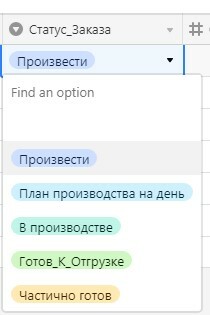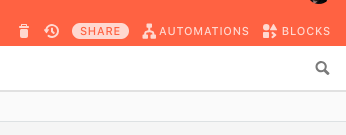In this example, my {Status} field has three options, and I want to know when “Option B” is chosen.
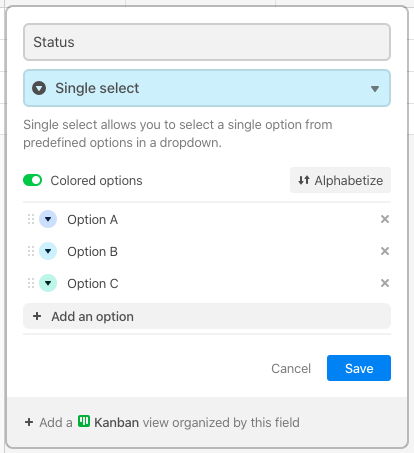
I added a formula field that looked for that specific option:

That will output a 1 when there’s a match, and a 0 the rest of the time. I then added a view with a filter to show records when that formula field contains a 1. I named this view “Trigger: Option B” as a reminder that this view triggers an automation.

I added a date field named {Option B Chosen}, where the automation will store the date and time that “Option B” is selected.
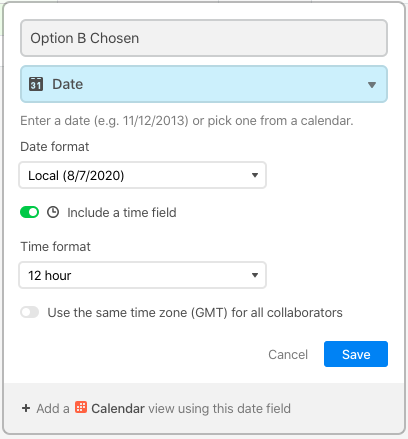
I also added a “Last Updated Time” field named {Status Updated}, which will capture any changes to the status.

NOTE: Both {Option B Chosen} and {Status Updated} should be formatted with the time field ON, but not set to GMT. This will ensure that all recorded times remain local. (If you leave the time option off, things won’t work cleanly.)
I added a new automation named “Status Change: B” to trigger when a record enters that view. Make sure that you have at least one record with that option chosen so that the trigger will test successfully.

I then added a “Update a record” action. This will copy the date and time from the {Status Updated} field into the {Option B Chosen} field.
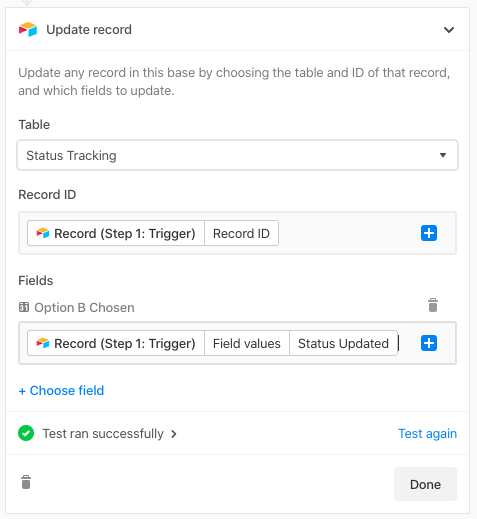
When the status changes to “Option B,” the date will be stored in {Option B Chosen}. For all other options, nothing will happen.

This setup works well when you only want to track a few options out of a larger list, because you’ll need a formula field, a date field, a view, and an automation for each option (you can use the same Last Modified Time field for all of them). When you want to do something unique with lots of options, I’d recommend a slightly different approach (which I won’t get into here in the interest of time, and also because it’s very use-case specific).

